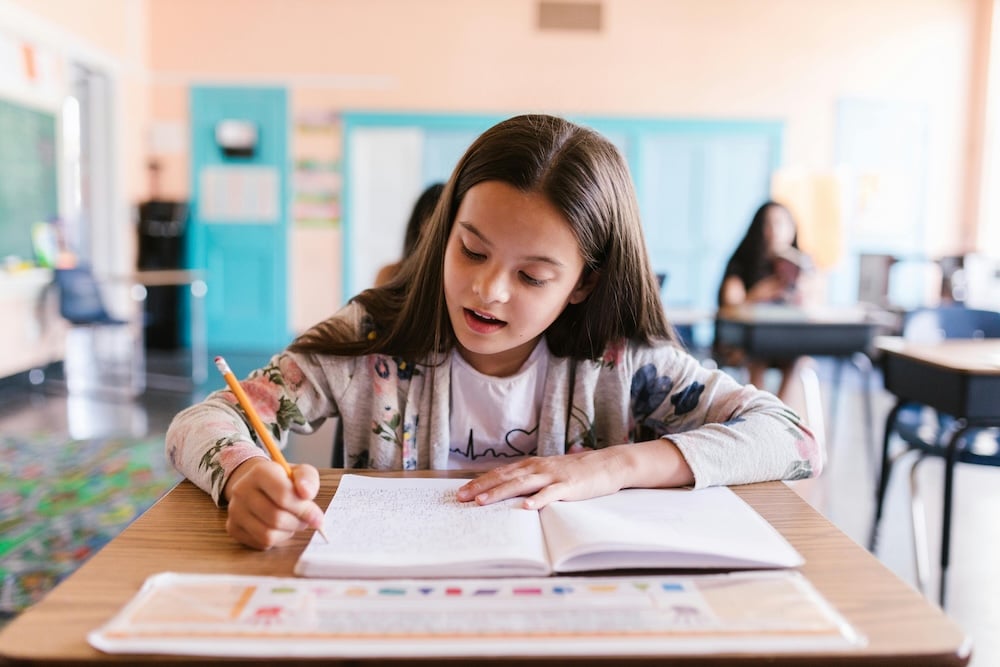Developing a growth mindset in the classroom is essential for helping students embrace challenges, persist through difficulties, and see mistakes as learning opportunities. When students believe their abilities can improve with effort and practice, they develop resilience and motivation that extend beyond academics into all areas of life.
By integrating social-emotional learning (SEL) and teaching growth mindset, educators can empower students to develop the confidence and problem-solving skills they need to navigate obstacles with a positive outlook. In this article, we’ll explore growth mindset strategies for students, classroom growth mindset activities, and ways teachers can create a growth mindset for the classroom through structured SEL practices.
What Is a Growth Mindset?
A growth mindset for students is the belief that intelligence, abilities, and talents can develop through effort, persistence, and learning from mistakes. This contrasts with a fixed mindset, where students believe their intelligence and skills are unchangeable.
Growth Mindset Definition for Students
A simple way to explain growth mindset in schools to young learners is:
“When you practice and keep trying, your brain gets stronger, and you get better at things over time!”
Why Is Growth Mindset Important for Students?
Students with a growth mindset in education:
✔ Take on Challenges: They see obstacles as growth opportunities rather than roadblocks.
✔ Develop Resilience: They bounce back from misses and keep trying despite setbacks.
✔ Stay Motivated: They understand that effort leads to improvement.
✔ Enjoy Learning: They are more open to feedback and new learning experiences.
By fostering a growth mindset for students, teachers help them develop the perseverance they need for both academic and personal success.
The Connection Between Growth Mindset and SEL

Through structured SEL programs like Tools of the Heart, students learn to:
- Recognize and manage emotions when facing challenges.
- Develop self-confidence in their ability to improve and grow.
- Practice empathy in learning environments by encouraging peers and embracing collaborative problem-solving.
By integrating SEL principles into growth mindset classroom activities, teachers create a supportive space where students feel safe to take risks, learn from mistakes, and push beyond their comfort zones.
Growth Mindset Strategies for Students
1. Encourage the Power of “Yet”
Students often say, “I can’t do this,” but adding “yet” transforms their mindset:
🔹 “I can’t do this… yet.”
🔹 “I don’t understand… yet.”
This small change shifts their thinking toward progress rather than limitation.
2. Reframe Mistakes as Learning Opportunities
Instead of leaning into fears of failure, students should see mistakes as part of the learning process. Teachers can:
✔ Share personal stories about overcoming challenges.
✔ Celebrate mistakes as evidence of effort and growth.
✔ Encourage reflection by asking students what they learned from their struggles.
3. Praise Effort, Not Just Results
Rather than saying, “You’re so smart!”, focus on effort-driven praise:
🔹 “I love how you kept trying, even when it was hard!”
🔹 “That was a great strategy—you’re improving because of your practice.”
This reinforces a growth mindset for the classroom by highlighting persistence over natural ability.
4. Use Growth Mindset Language
Help students develop a strong growth mindset in education by modeling positive self-talk:
- Instead of: “This is hard.” → Say: “This will take time and practice.”
- Instead of: “I made a mistake.” → Say: “Mistakes help me learn.”
- Instead of: “I’ll never get this.” → Say: “I can improve with effort.”
Language shapes mindset, and consistent reinforcement makes a lasting impact.
Growth Mindset Classroom Activities
1. The Growth Mindset Journal
Encourage students to keep a journal where they:
✔ Write about a challenge they faced and how they handled it.
✔ Reflect on what they learned from a mistake.
✔ Set personal learning goals and track their progress.
This simple activity builds self-awareness and perseverance.
2. Brainstorm “Famous People Who Succeeded With Challenges”
Show students growth mindset examples by discussing people who faced setbacks before succeeding. Examples include:
- Thomas Edison (tried and missed 1,000+ times before inventing the lightbulb).
- Michael Jordan (was cut from his high school basketball team).
- J.K. Rowling (her book was rejected by 12 publishers).
Discuss how these individuals embraced challenges, persisted, and ultimately achieved success.
3. The Growth Mindset Challenge Board
Create a classroom board with weekly challenges that encourage effort and persistence, such as:
✔ “Try something new and share what you learned.”
✔ “Work on a skill you struggle with for 10 minutes a day.”
✔ “Help a friend when they feel stuck.”
This activity promotes growth mindset strategies for students while reinforcing peer encouragement.
4. Fixed vs. Growth Mindset Sort
Provide students with statements and have them sort them into “Fixed Mindset” vs. “Growth Mindset” categories. Examples:
✔ “If I’m not good at something, I should stop trying.” (Fixed)
✔ “With practice, I can improve at anything.” (Growth)
This helps students recognize unhelpful thought patterns and shift toward a growth mindset in schools.
Creating a Growth Mindset Classroom Environment
Incorporating a growth mindset for the classroom goes beyond activities—it’s about creating a culture that values persistence, curiosity, and resilience.
Classroom Growth Mindset Tips
- Model Growth Mindset Behavior – Share your own learning experiences and struggles.
- Normalize Effort Over Perfection – Encourage students to try their best rather than fear failure.
- Celebrate Small Wins – Acknowledge incremental progress in learning.
- Encourage Peer Support – Teach students to uplift and encourage each other when facing challenges.
By consistently reinforcing these principles, teachers can create a classroom growth mindset that helps students develop lifelong learning habits.
Empower Your Students with a Growth Mindset
Developing a growth mindset in the classroom transforms the way students approach challenges and setbacks. By integrating growth mindset strategies for students alongside SEL principles, educators help students cultivate perseverance, resilience, and confidence in their ability to grow.
Looking for more structured SEL resources? Check out Soul Shoppe’s Tools of the Heart Online Course for interactive lessons that support student emotional growth and resilience.
Together, let’s create classrooms where students believe in their potential and embrace every challenge as a stepping stone to success!
You May Also Like:


